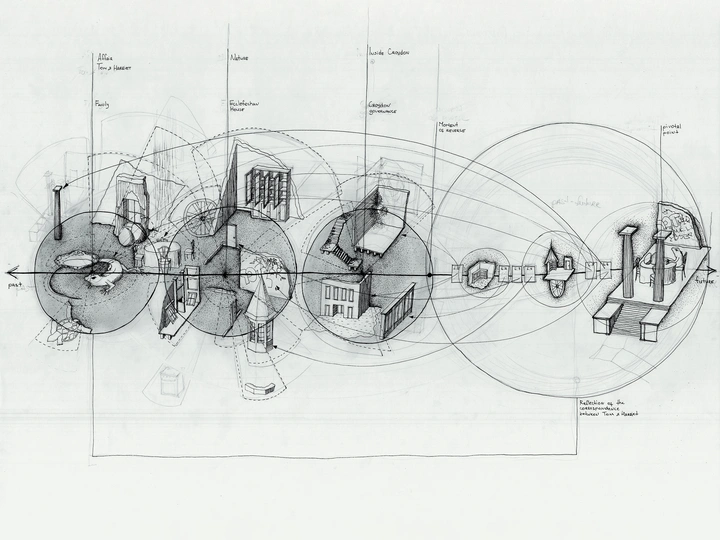The House That Slowly Collapses

I am a multidisciplinary artist from Ukraine with a background in architecture and an independent practice focused on film, installation, and speculative world-building. My work explores non-linear storytelling, institutional critique, and more-than-human intelligence.
I have graduated from the Architectural Association and have previously worked in formal architectural practices, including OMA in Rotterdam. I have experience with group facilitation projects, including co-teaching an architectural studio for Ukrainian refugees in Rotterdam, and ongoing involvement as co-tutor and associate curator of the AA Visiting School “Film and Narrative Forensics: Rebuilding Rome”, the Film Architecture Forum, and the Publishing Forum.
Alongside this, I have been developing my independent artistic practice. Rooted in architectural thinking, my interventions are system-based and site-specific. I am interested in the subjective and speculative constructs of past, present, and future.
Real comes in the form of the absurd. My earlier work explored how space is perceived across multiple species, creating worlds where the subjective spatial constructs of animals, plants, and humans merge into a composite whole that appears other than its parts, yet is composed of nothing beyond them.
My recent work has been exhibited in a performative group show “Anatomy of Change” in Ateliers Babiole in Paris and selected by several film festivals in Europe. Upcoming projects include an exhibition at the Handbag Gallery, London, developed in collaboration with a collective of practitioners and the Museum of Human Violence. The two-week group show will explore themes of radical futurism for a post-anthropocentric world, addressing broken relationships between humans and the “other” nature. The speculative show will be set in 2065, occupying one of the former Tate Modern’s galleries and featuring the archival evidence of the Giant Rupture of 2034.
Walter Benjamin’s description of Angelus Novus envisions history not as progress, but as catastrophe: wreckage upon wreckage, blown forward by a storm we call “progress”.
The House That Slowly Collapses rejects the linearity of Western historical imagination and its blind pursuit of idealised futures, where each new iteration must be better than the previous one and failures must be eradicated. Instead, the project embraces ruin as a generative force.
This body of research was developed over 2024 - 2025 and is manifested through a short film. It is a proposal of a new institution that reverses human progress and, instead of rushing forward, goes further into the past, visiting the sites of our failures, overlaying the fragments they generate. It creates a new elliptical model of time, where past, present, and future can collide and coexist.
The film begins in a present moment of conflict, where our domestic monstrosities pile up at the walls of institutions no longer able to respond. It then takes us on a journey through three types of ruins: city planning, the House of Ecclefechan, and the relationship of the people who once lived there.
A starting point - “mould on the walls” is a speculative fragment of the built environment extracted from the comments section of the blog “Inside Croydon”. This fragment is idealistic, the author is using tools of narrative - humour, exaggeration and juxtaposition - to alter the physical environment and reveal the gaps between the institutional constructs and the real built environment. Further fragments from the blog follow: a missile on the street, trash, rotten wooden window, closed public libraries, broken fountain.
The work amplifies local, dispersed voices that oppose institutional agendas by contextualising them in a larger body of subjective recreations. Rather than looking into the future, the audience has to look back, composing a crystal: a speculative, spontaneously forming construct of the present.